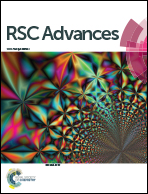[2.2.2]Paracyclophane, preference for η6 or η18 coordination mode including Ag(i) and Sn(ii): a survey into the cation–π interaction nature through relativistic DFT calculations†
Abstract
[2.2.2]Paracyclophane is a versatile π-cryptating structure, which can exhibit η2:η2:η2 and η6:η6:η6 coordination with metal ions, involving two or six carbon atoms in each aromatic ring. According to the nature of the metallic cation, the interaction can occur at the centre of the cage or upper face of the structure, which is determined mainly by the ligand-to-metal charge transfer ruled by symmetry and energetic considerations, and thus by the nature of the cation–π interaction. For Ag(I), the 5s-Ag shell is close in energy to the frontier orbitals of paracyclophane, resulting in the formation of a bonding combination with the symmetric combination of the π2-type levels, which leads to a non-centered conformation. In contrast, the Sn(II) case exhibits a largely favourable bonding interaction with the π2 and π3 type levels, which involve the 5p-Sn shell and result in a centered conformation. The interaction between the metal and paracyclophane was studied via molecular orbitals diagram, energy decomposition analyses (EDA) and non-covalent indexes (NCI).
![Graphical abstract: [2.2.2]Paracyclophane, preference for η6 or η18 coordination mode including Ag(i) and Sn(ii): a survey into the cation–π interaction nature through relativistic DFT calculations](/en/Image/Get?imageInfo.ImageType=GA&imageInfo.ImageIdentifier.ManuscriptID=C4RA12859A&imageInfo.ImageIdentifier.Year=2015)

 Please wait while we load your content...
Please wait while we load your content...